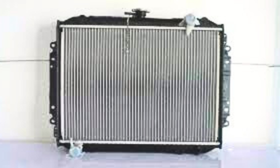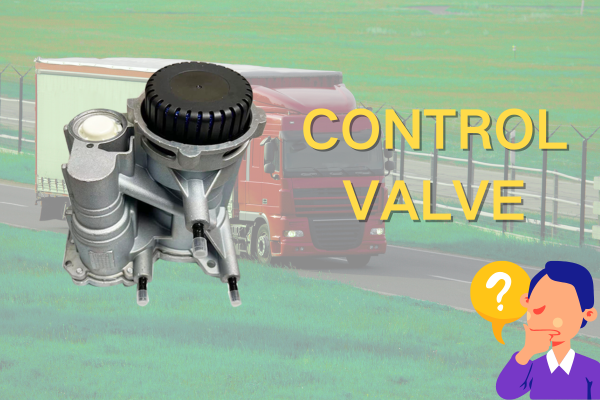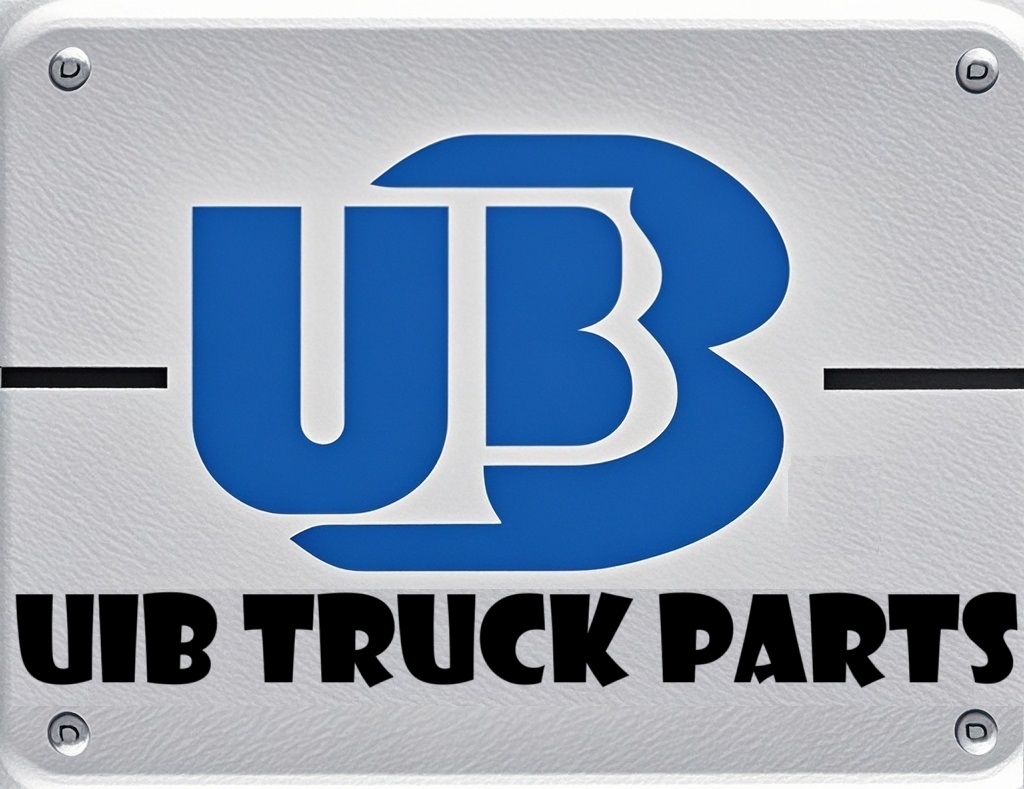About Us
Truck Radiator: Structure, Functions, Maintenance and Common Problems Analysis
Views : 147
Update time : 2025-07-18 11:03:55
I. Introduction

As the main force of road transportation, the stable operation of trucks is crucial. The radiator, as the core component of the truck's cooling system, plays a key role in maintaining the normal operation of the engine. Understanding the truck radiator helps vehicle owners and maintenance personnel better maintain the vehicle and extend its service life.
II. Structure and Working Principle of Truck Radiator

(I) Structural Composition
- Radiator Body: Mostly made of metals with good thermal conductivity such as copper and aluminum, it is box - shaped and used to store coolant.
- Radiating Fins: The thin flaky fins on the surface of the radiator can increase the contact area with air and accelerate heat dissipation.
- Water Pipe Connection: Connected to the engine water jacket through inlet and outlet pipes to form a coolant circulation path.
- Radiator Cap: It plays a sealing role and is equipped with pressure valves and vacuum valves to adjust the pressure inside the radiator.
- Coolant Level Indicator: Facilitates checking the coolant level to ensure it is sufficient.
(II) Working Principle
The engine generates a lot of heat during operation. The coolant absorbs heat while circulating in the engine water jacket and then flows into the radiator through the inlet pipe. The heat is transferred to the air through the radiator body and radiating fins. The cooled coolant flows back to the engine water jacket through the outlet pipe. This cycle maintains the normal working temperature of the engine.
III. Important Functions of Truck Radiator in the Cooling System
(I) Heat Dissipation and Cooling
This is the main function of the radiator. If the heat generated by the engine during operation is not dissipated in time, it will cause damage to components. The radiator dissipates heat into the atmosphere through coolant circulation and heat exchange, keeping the engine at a suitable working temperature of 80℃ - 95℃.
(II) Maintaining Pressure Balance
The pressure valve and vacuum valve of the radiator cap work together. When the system pressure changes due to the temperature change of the coolant, they release pressure or suck in air respectively to maintain pressure balance and ensure the normal circulation of the coolant.
(III) Protecting Engine Components
A suitable working temperature can reduce the thermal stress and wear of various engine components. The radiator effectively controls the engine temperature, avoids faults caused by overheating, prolongs the service life of the engine and reduces maintenance costs.
IV. Daily Maintenance Points of Truck Radiator
(I) Coolant Level Check
- Inspection Frequency: Check before each trip and during breaks in long - distance transportation.
- Inspection Method: The liquid level should be between the minimum and maximum marks. If it is insufficient, add coolant of the same brand and model in time.
- Precautions: The engine must be completely cooled when adding coolant. If the liquid level drops too fast, it is necessary to check for leaks.
(II) Coolant Quality Inspection and Replacement
- Quality Inspection: Regularly check the color and transparency of the coolant. If it deteriorates, it needs to be replaced. Use a detector to check whether the freezing point and boiling point meet the requirements.
- Replacement Cycle: Generally, it should be replaced every 2 years or 40,000 kilometers. The cycle should be shortened when used in harsh environments or with high frequency.
- Replacement Steps: After the engine cools down, drain the old coolant, flush the system with clean water, close the drain valve, add new coolant to the specified position, start the engine to circulate, and then make up to the appropriate level.
(III) External Cleaning of Radiator
- Cleaning Frequency: Clean once a month, or when there is a lot of debris on the radiating fins, and increase the frequency in harsh environments.
- Cleaning Method: Use compressed air to blow from the back, or rinse from the front with a low - pressure water gun, control the water pressure, and avoid impacting plastic parts and joints.
- Precautions: Turn off the engine and ensure the fan stops before cleaning, and check whether the components are damaged after cleaning.
V. Common Problems and Solutions of Truck Radiator
(I) Radiator Leakage
- Cause Analysis: Leakage may be caused by cracks in the radiator body, damage to radiating fins, loose water pipe joints, aging gaskets, as well as vibration, corrosion, external impact, etc.
- Solutions: Minor cracks or small holes can be repaired with radiator sealant; for larger cracks or loose joints, replace parts or fasten them; replace aging gaskets in time. Conduct pressure test after maintenance.
(II) Poor Heat Dissipation of Radiator
- Cause Analysis: Debris accumulation on radiating fins, insufficient or deteriorated coolant, fan failure, excessive internal scale, etc.
- Solutions: Clean debris on radiating fins; add or replace coolant; repair or replace faulty fan parts; clean internal scale with special cleaning agents.
(III) Radiator Boiling (Coolant Boiling)
- Cause Analysis: Excessive heat from high - load engine operation, cooling system leakage, thermostat failure, fan failure, etc.
- Solutions: Stop immediately, let the engine idle to dissipate heat, and open the hood; after the temperature drops, check the liquid level and leakage, add coolant; repair or replace faulty thermostat and fan parts, do not drive until the problem is solved.
VI. Conclusion
The truck radiator is crucial for the normal operation of the truck. Understanding its structure, principle, functions and maintenance points can timely solve common problems and ensure the good working condition of the engine. Regular maintenance can extend the service life of the radiator and engine, improve truck operation efficiency, reduce transportation costs, and ensure the safety and smoothness of road transportation.
Related News
 Revealing Three Little-Known Facts About Trucks
Revealing Three Little-Known Facts About Trucks
Aug 06,2025
This article presents three little-known facts about trucks, including that the cab can be flipped for engine maintenance, the rearview mirrors are equipped with defrosting and deicing functions, and the small tank next to the fuel tank is an urea tank which is crucial for environmental protection. It helps readers understand the secrets behind truck designs and functions.
 Control Valve: The "Key Steward" in Truck Engines
Control Valve: The "Key Steward" in Truck Engines
Aug 05,2025
This article introduces the role of the control valve in the diesel pump, including controlling fuel quantity and stabilizing pressure; lists symptoms when it malfunctions, such as weakened power and increased fuel consumption; provides maintenance methods, and illustrates through cases that paying attention to the control valve can avoid unnecessary expenses.
 Control Valve: The "Invisible Commander" of Truck Power
Control Valve: The "Invisible Commander" of Truck Power
Aug 05,2025
The control valve is an indispensable core regulating component in the truck power system. Although it hides inside the machinery and keeps a low profile, it relies on its powerful functions to precisely command the rhythm of power output, comprehensively ensure driving safety, and intelligently adapt to various working conditions. With sophisticated design techniques and durable material selection, it can achieve a perfect balance between power and efficiency in various complex scenarios, and can be called the invisible cornerstone supporting the efficient and stable operation of trucks.
 Truck Snow Chains: Safety Guarantee on Icy and Snowy Roads
Truck Snow Chains: Safety Guarantee on Icy and Snowy Roads
Jul 28,2025
This article elaborates on truck snow chains, including their important role on icy and snowy roads, applicable scenarios, selection methods, installation steps, and usage precautions. It aims to provide references for truck drivers to drive safely in icy and snowy weather and reduce accidents caused by slippery roads.
